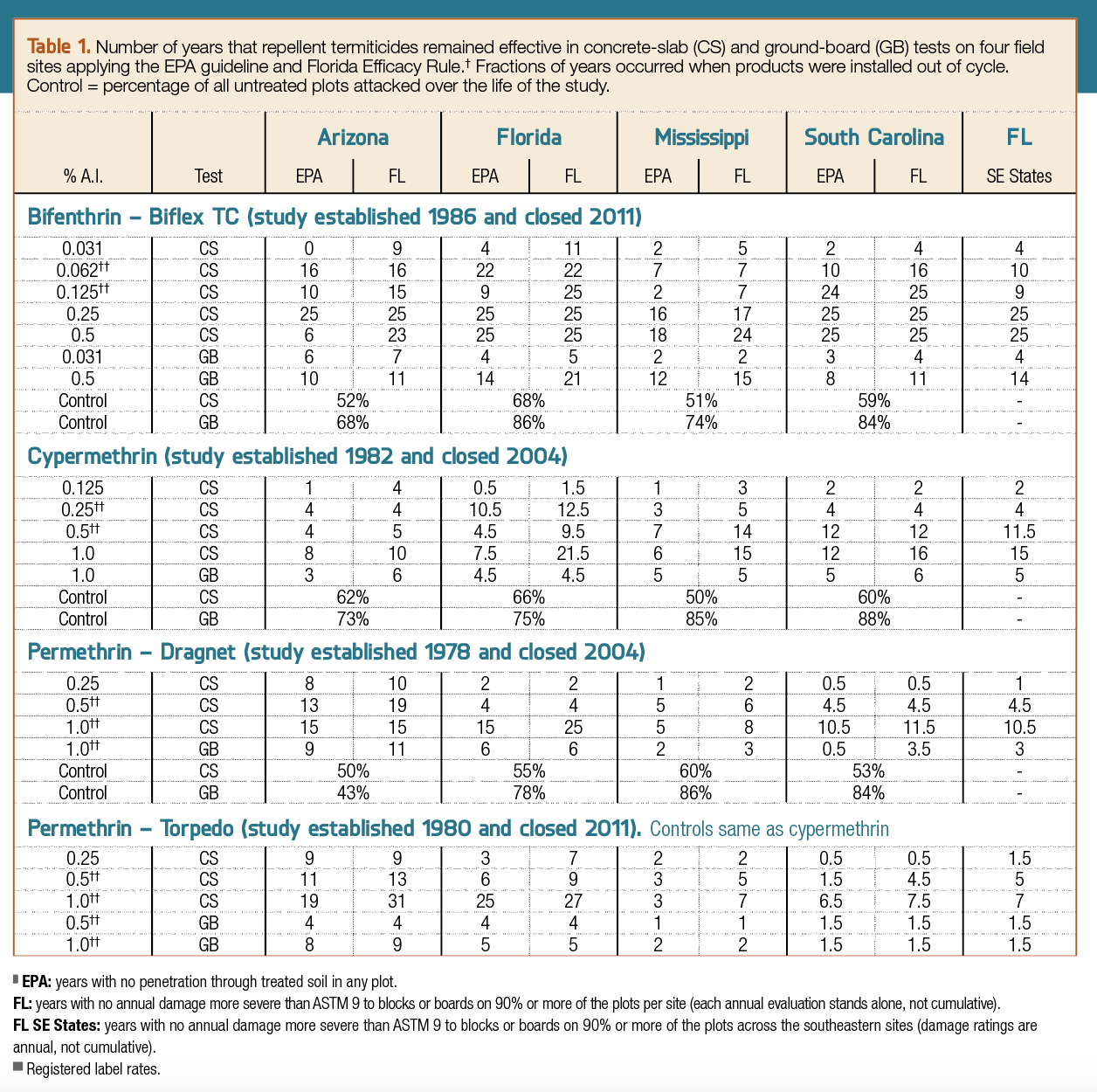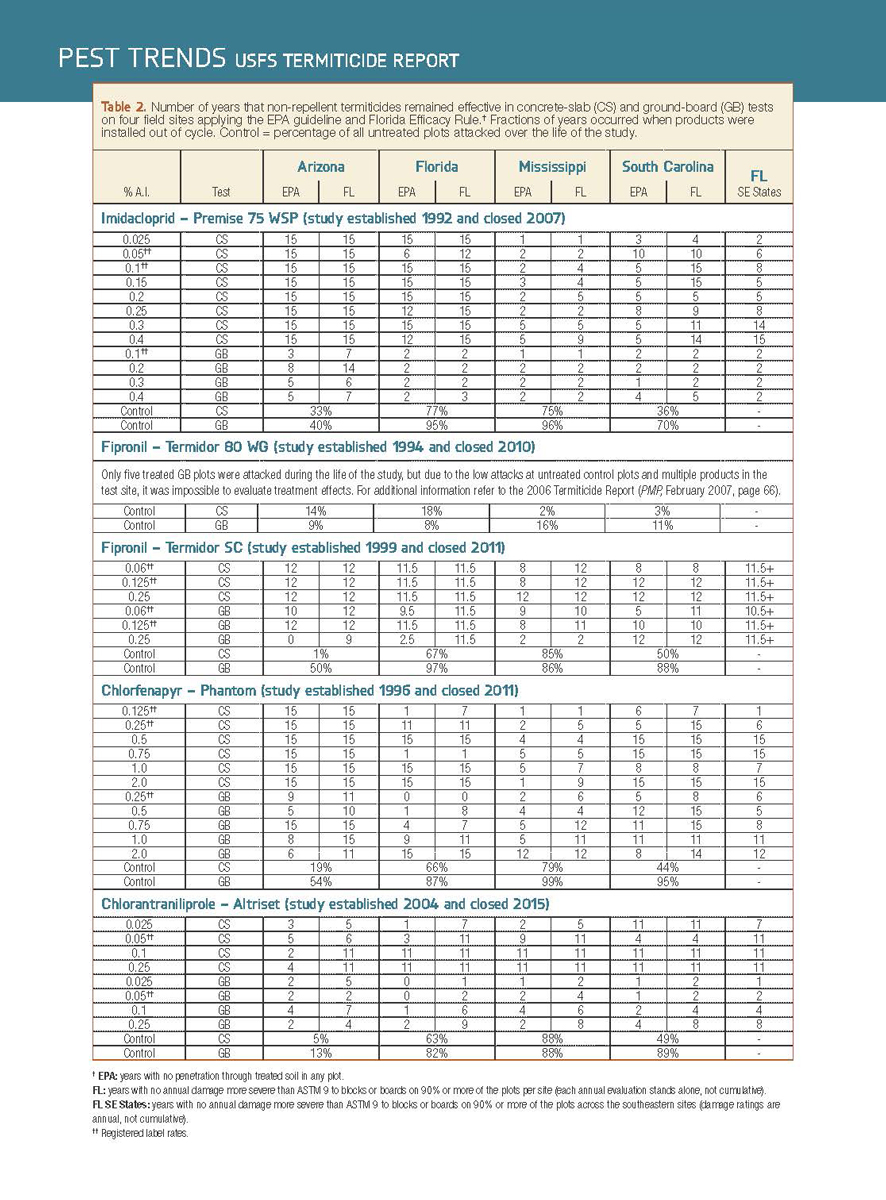Sunday, February 28, 2021
IICRC Updates: March 2021
from Subscribe to R&R Magazine's RSS Feed https://www.randrmagonline.com/articles/89317-iicrc-updates-march-2021
Mold Remediation Baltimore
How Mentorship Can Help Grow a Successful and Profitable Business
Mentoring owners of small businesses in the indoor air quality industry (IAQ) is what the National Organization of Remediators and Mold Inspectors (NORMI) has been doing for more than 16 years. It is true, the organization is a training and certifying trade association, but it's not just about getting certified—it's about building a successful business.
from Subscribe to R&R Magazine's RSS Feed https://www.randrmagonline.com/articles/89316-how-mentorship-can-help-grow-a-successful-and-profitable-business
Mold Remediation Baltimore
Crawlspace Depot: Adhesives, Tools and Accessories
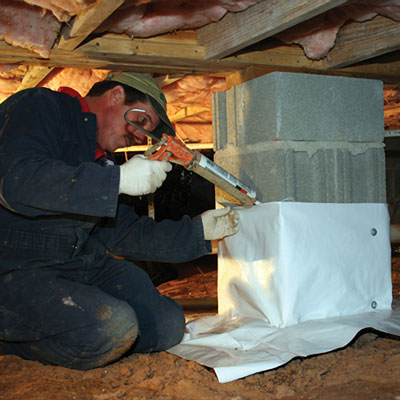
IMAGE: CRAWLSPACE DEPOT
Along with dehumidifiers, wall and floor liners, insulation and other crawlspace supplies, Crawlspace Depot also carries all the tools and accessories you need to get the job done. The company has tested all kinds of adhesives over the years, to provide a full line of preferred products for your closed crawlspace projects. To effectively insulate a crawlspace and gain maximum energy savings, a combination of insulating filler foam, caulking adhesive, construction adhesive and sealing tape is essential.
CrawlspaceDepot.com/categories/adhesives
The post Crawlspace Depot: Adhesives, Tools and Accessories appeared first on Pest Management Professional.
from Pest Management Professional https://www.mypmp.net/2021/03/01/crawlspace-depot-adhesives-tools-and-accessories/
Sacramento CA
Saturday, February 27, 2021
Delegate, and only hold meetings that matter

The newly reconvened Schopen leadership team consists of, from left: Michelle Bennett, a CSR team member; Chris Baumann, manager of the McHenry branch; Wendy Sepsey, general manager; and Chris Halsema, a veteran technician. They are led by “The Queen” herself, Tami Schopen, far right. PHOTO: PETE SCHOPEN
If you grow a business big enough, eventually you will need to rely on others. This is a topic I have covered in this column before. But hiring a manager or two isn’t the only way to delegate.
Two years ago, I made a major step in expanding my business by instituting a leadership team. I had read Gino Wickman’s book Traction: Get a Grip on Your Business, and decided that, even though my business was relatively small, I wanted to create a certain type of culture in my company. To kickstart implementing this culture, I picked seven people I thought would help me take Schopen Pest Solutions to the next level.
The first leadership team met a few times, tossed around some ideas, and helped me hire some really good candidates. But once COVID-19 hit, the team stopped meeting and dissolved.
I feel like we can get a new group up and running this year with some important agenda items. I want to see progress on some critical issues, such as celebrating our 15-year anniversary, making springtime hires, creating a corporate office, and improving training procedures, just to name a few.
BE LIKE FRED
The first step, however, is to make sure we are having productive meetings. Elon Musk and Mark Cuban are both very vocal about wasted production time because of meetings. My father-in-law, Fred Grosch, would walk out of any meeting that took more than an hour.
I want my leadership team to be on point and have great meetings that produce results. I don’t particularly like meetings, either, but I understand their importance. So when I hold a meeting, I make sure there is an agenda and a purpose. Whether it’s education or clearing up communication, I make sure the meetings matter.
Currently, I hold Tuesday staff meetings:
- 9 a.m.: Department head meeting with a clear, defined agenda.
- 9:30 a.m.: Executive meeting with the co-owner (Tami, my wife), the general manager and the operations manager.
- 9:45 a.m.: Meeting with the branch manager and his assistant supervisor.
- 10 a.m.: I bring in the customer service reps, the inside sales team and the billing department, and present a 30-minute course on pests. Each week, I pick a different bug, rodent or arachnid to increase the office staff ’s knowledge on pest biology and behavior, and on how we are performing treatments.
On the last day of the month, I meet with all of my employees and we go over important issues, particularly human resources matters and training.
BE LIKE JOEL AND JEN
Joel and Jen Miller own Miller Pest and Termite in Des Moines, Iowa. After reading Traction, Jen laid the groundwork for Miller’s leadership team. She and Joel make each leadership team member “own” different numbers or statistics for the company.
For example, one leadership person might be responsible for tracking retention, another for sales, another for office staff key performance indicators (KPIs) and maybe another for training, and so on. The Millers have five members on the leadership team, and the team meets at 7:30 a.m. every Wednesday. Meetings run for 90 minutes and cover a wide array of topics, such as employee highlights, weekly action items and long-term goals.
“Our biggest problem used to be communication,” Joel told me. “Now we are all on the same page, and we all know what our goals are for the company.”
BE LIKE TAMI AND ME
In December, Tami and I put together a new leadership team. This new team met with me Dec. 21, and will continue to meet (without me) every third Monday of every month at 1 p.m.
At that initial meeting, I explained what I expected from them and how they should conduct their meetings. I also gave them their first task: Read Traction. I purchased this phenomenal book for each member of the leadership team, and I turned future meetings over to Tami (with her blessing, of course!).
With this team in place, I’m optimistic our culture will continue to improve and evolve. Our training will become more in-depth, and our accountability will reach new levels.
And if we make an extra buck or two as a result, that will be great, too.
SCHOPEN is owner and founder of Schopen Pest Solutions, McHenry, Ill. You can email him at pete@schopenpest.com or reach him via Twitter: @schopenpest; Instagram: @peteschopen; or Facebook: Schopen Pest Solutions, Inc.
The post Delegate, and only hold meetings that matter appeared first on Pest Management Professional.
from Pest Management Professional https://www.mypmp.net/2021/02/27/delegate-and-only-hold-meetings-that-matter/
Sacramento CA
Friday, February 26, 2021
Brush up on your bird knowledge
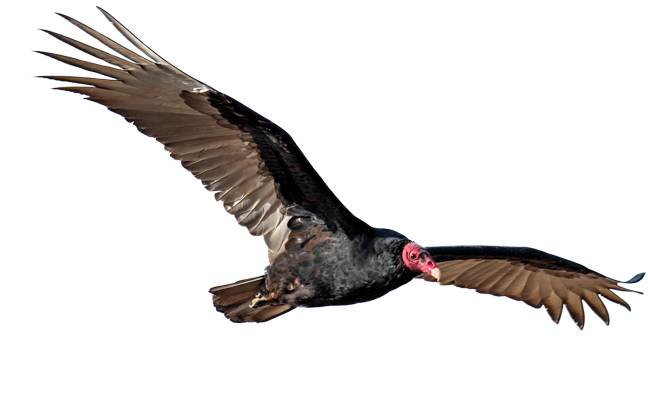
PHOTO: PATRICK GIJSBERS/E+/GETTY IMAGES
Take this tech test with questions and answers supplied by pest control industry experts to see how well you know birds.
Editor’s Note: Questions for this month’s test were contributed by Greg Baumann; Judy Black, BCE; Michael Broder; Jim Davis; Doug Foster; and Paul Hardy.
The post Brush up on your bird knowledge appeared first on Pest Management Professional.
from Pest Management Professional https://www.mypmp.net/2021/02/26/brush-up-on-your-bird-knowledge/
Sacramento CA
Roadtrip Roundup: 2021 Purdue Pest Management Conference
Thanks to the ongoing COVID-19 pandemic, the annual pest management conference that has historically taken place on the West Lafayette, Ind., campus of Purdue University took place on attendees’ digital devices instead. For the first time in the event’s 85-year history, attendees went online to watch presenters and receive their continuing education units (CEUs) for a number of states. A virtual “trade show” also was part of the online activities, as were a few networking options and the semi-annual Pi Chi Omega membership meeting.
If there were a silver lining to going online instead of meeting in person, several attendees noted, it was the fact that one could pause a prerecorded presentation and pick up as their schedules allowed. The event itself was live from Jan. 11-14, but the archived presentations were available through Jan. 16. Because each prerecorded presentation was followed by a live question-and-answer session that was scheduled for an hour, there was another unforeseen benefit: In years past, Purdue’s packed schedule meant that presenters had only a few minutes at the end of their time slots to take questions from the audience. This year, nearly every presenter took advantage of the allotted 60 minutes live with audience members. They were able to dive in-depth into questions typed into the chat box feature of the online interface.
The 86th Purdue Pest Management Conference is set, tentatively in-person, for Jan. 10-12, 2022. The planning committee currently is exploring a hybrid version, where there could be online components for interested pest management professionals who are unable to travel. Stay up-to-date on announcements for the event on the Purdue website.

SCREENSHOT: PMP STAFF
To open the conference, Dr. Gary Bennett, professor emeritus of Purdue University (and a Pest Management Professional [PMP] Hall of Famer, Class of 2006), prerecorded welcoming remarks to attendees.

SCREENSHOT: PMP STAFF
“It’s incredibly important to frame all of your responses in terms of the word risk, rather than safety,” Amy Cross, a National Pesticide Information Center project coordinator, noted during her presentation on “A Practical Approach to Risk Communication.”

SCREENSHOT: PMP STAFF
Industry consultant Jeff McGovern, The Resource Shop, reminded attendees to strike the balance of taking care of all the necessary precautions for COVID-19 with making sure “the pests don’t win” at customer accounts.

SCREENSHOT: PMP STAFF
Jake Plevelich and Ashley Amidon, CAE, gave updates on industry regulatory issues on behalf of the National Pest Management Association (NPMA).

SCREENSHOT: PMP STAFF
PMP Hall of Famer Dr. Bobby Corrigan (Class of 2008) kicked off Day 3 of the conference with a master class on rodent control. Although he’s considered to be the industry’s foremost rodentologist, he reminded attendees “we’re all students of this complex animal.” Sylvia Kenmuir, BCE, of BASF, followed Dr. Corrigan’s presentation with a discussion of rodenticide formulations and what PMPs should know about them.

SCREENSHOT: PMP STAFF
“We don’t make a lot of the products you buy,” quipped Purdue University’s Dr. Mike Scharf during his presentation of his research department’s termite work. “We make a lot of the products you buy better.” His presentation was one of four parts; the others were presented by Dr. Jason Meyers, BASF; Dr. Jim Fredericks, NPMA (and PMP’s “Callback Cures” columnist); and Jay Kelley, Office of the Indiana State Chemist.

SCREENSHOT: PMP STAFF
“What pest is going to be next? Whatever it is, it better have a pretty cool name, because it has to compete with the murder hornet,” Mark VanderWerp, BCE, manager of education and training for Rose Pest Solutions, joked during his “infotaining” take on “Pests in the News.”

SCREENSHOT: PMP STAFF
The event’s final presentation was conducted by the University of Kentucky’s Dr. Zach DeVries, who gave attendees an overview about cockroaches.

SCREENSHOT: PMP STAFF
Keith Markun, VP of the National Wildlife Control Operators Association (NWCOA) and a wildlife control company owner and expert, educated attendees on woodpeckers: biology, behavior and management.

SCREENSHOT: PMP STAFF
Dr. Rick Vetter, University of California Riverside, educated attendees on how to talk to customers about spiders, and dispelled some myths.

SCREENSHOT: PMP STAFF
Dr. Grzesiek Buczkowski, Purdue University, focused on the biology, behavior, control and research updates for odorous house ants.
Not-pictured presenters included:
- Gene White, Rentokil, explained how “five-minute fixes” like exclusion and other preventive pest control techniques can be a game-changer for your customers.
- Rich Kammerling, RK Pest Management, offered attendees “an auditor’s view on pest sensors.”
- Jeremy Jackson, Douglas Products, gave a fumigation update.
- Lee Green, Indiana Department of Health, discussed the Eastern Equine Encephalitis outbreak that occurred in Northern Indiana in 2019.
The post Roadtrip Roundup: 2021 Purdue Pest Management Conference appeared first on Pest Management Professional.
from Pest Management Professional https://www.mypmp.net/2021/02/26/roadtrip-roundup-2021-purdue-pest-management-conference/
Sacramento CA
Eastside manages and motivates for CSR employee loyalty
OBSTACLE: Attracting and retaining quality employees
OPPORTUNITY: Communicating expectations helps everyone work toward a common goal

Taking care of your CSRs is an important way to take care of your clients and business. PHOTO: EASTSIDE EXTERMINATORS
It can be a challenge for pest control companies to find, hire and keep good workers. But having a solid strategy in place has enabled Sharon Roebuck, COO of Eastside Exterminators, Woodinville, Wash., to retain a talented team of customer service representatives (CSRs).
“We hire, fire, review and reward based on our company’s core values, which are: ‘Family Focused, Passionate, Committed and Do the Right Thing,’” she says. “We find that it is easier to coach someone to learn a specific position if they posses our core values.”
The company’s website features a career portal that emphasizes this belief, and the importance of the company’s culture. “Our core values are the soul of our culture, it is who we are,” Roebuck adds. “We are truly a family. Our mission is ‘Our family protecting families.’ We take care of one another and our customers.”

Sharon Roebuck
Ten CSRs, including billing agents, work at Eastside Exterminators. Roebuck says she is “slow to hire and quick to fire.” “I know that sounds brutal,” she explains, “but nobody wants to work in a position they are not good at and don’t like. It’s not good for the company, our clients, or the employee.”
The hiring process starts with a phone interview that ensures the candidate meets the basic qualifications for the position. An in-person interview is next, to allow the department manager to ask questions that ensure the candidate is not only qualified to do the job, but will fit in with the company’s culture. Then, a working interview takes place so the candidate can experience firsthand what the job entails.
“This also helps us get to know the person a little bit better and gives them a chance to get to know us,” Roebuck says. “We fiercely protect our culture, but we also recognize we may not be everyone’s cup of tea.”
Once hired, the company tracks and evaluates the employee’s performance using the 30/60/90 method. It consists of a form — now digital, because employees are working from home due to the pandemic — that shows what new employees are expected to know every 30, 60 and 90 days as they receive training and learn their new duties.

Fostering a sense of camaraderie is essential. PHOTO: EASTSIDE EXTERMINATORS
“We absolutely let our new hires know about the 30/60/90 during the interview process,” she adds. “We tell them what training will be like, and how we will communicate what is expected of them. Although our interview process may seem involved and take a bit longer than most, we find that this helps the company and candidates make the best decisions when embarking on the very important decision of whether to join our Eastside family.”
Managers conduct a formal check-in every two weeks to go over the 30/60/90 form with each new employee — to let them know whether they are right on track or are falling behind with their assigned tasks. It’s an opportunity to say, “You have to step it up a little bit if you’re going to make it through this training period,” or “You’re doing great and exceeding our expectations, so we’re going to move some of the tasks from the 60-day list to the 30-day list.”
“It’s a good tool to make sure new hires understand what is expected of them,” Roebuck says. “We find that open and honest communication flushes out issues, and helps build a strong foundation from the beginning.”
The company also relies on what it calls “GWC,” which stands for Get it – Want it – Capacity. “We make sure each new hire truly ‘gets’ what is expected, ‘wants’ the position and has the ‘capacity’ to execute their duties,” she says.
Training for CSRs doesn’t stop there. It also includes the use of scripts to ensure customers hear the same message and have the same experience with every call. Recording calls provides an effective training tool, Roebuck says, and takes the guesswork out of what was or was not said during phone calls.
An easily accessible training manual is a must, because it enables employees to find answers to questions right away. Motivation is paramount for all Eastside Exterminators employees, and can take the forms of cash bonuses, contests, treats or even additional paid time off.
Professional development and advancement are important, too, to let CSRs know they are valued members of the team with attainable career goals.
“Our internal family is my first priority, which in turn spills over to our customers,” Roebuck says. “When employees are valued, it translates to valued customers.”
The post Eastside manages and motivates for CSR employee loyalty appeared first on Pest Management Professional.
from Pest Management Professional https://www.mypmp.net/2021/02/26/eastside-manages-and-motivates-for-csr-employee-loyalty/
Sacramento CA
The future of termite control
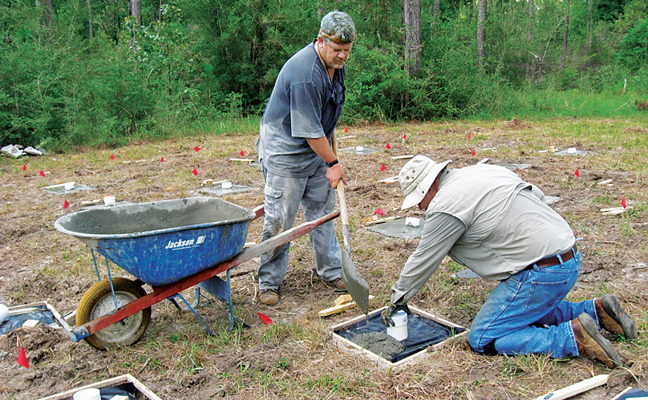
The USFS’ Don Fye fills a frame with concrete, while Craig Bell holds the PVC pipe in place. The capped pipe serves as an easy and repeatable means of accessing the test block while leaving the concrete slab in place. PHOTO: USFS
We’re proud to be the publication of record for the annual industry termiticide report, as prepared by the U.S. Department of Agriculture’s Forest Service Forest Products Laboratory, Durability and Wood Protection. Researchers gather data on the efficacy of termiticides in a controlled environment, reporting their information to the U.S. Environmental Protection Agency as part of the termite control product registration process. While the two new potential termiticides the team is testing are still top-secret as of press time, we look forward to the day they can break the news to pest management professionals — just like they’ve done in years past.
In the meantime, the industry’s current arsenal of termite control tools is quite strong, as evidenced by our focus on this segment. Better yet, the supplier participants in this section are nearly unanimous in their positive outlook for the future, which they foresee as realizing continual development of faster-acting, more-targeted and -efficacious protection from termites and other wood-destroying organisms.
Read more: USFS: Testing continues on 2 termiticide candidates
The post The future of termite control appeared first on Pest Management Professional.
from Pest Management Professional https://www.mypmp.net/2021/02/26/the-future-of-termite-control/
Sacramento CA
USFS: Testing continues on 2 termiticide candidates

Don Fye fills a frame with concrete, while Craig Bell holds the PVC pipe in place. The capped pipe serves as an easy and repeatable means of accessing the test block while leaving the concrete slab in place. PHOTO: USFS
Each year, the U.S. Department of Agriculture’s (USDA’s) Forest Service Forest Products Laboratory, Durability and Wood Protection research work unit (FS RWU 4723) installs and/or observes plots of soil treated with candidate termiticide products. These products may or may not be available to pest management professionals (PMPs) for application, depending on federal and state registration.
This article reports on the latest results of these studies, and provides data for those products that have reached federal registration. Data provided are limited to label-approved rates of application for these products. This article provides information for PMPs as well as homeowners, but limits the data to only those application rates legal to apply. Because the U.S. Forest Service (USFS) observes some plot locations late in the calendar year, the previous year’s data are reported in each publication (for example, this article will report on data collected in 2020; the 2019 data appears in the August 2020 issue of Pest Management Professional, or PMP). The Forest Products Laboratory is maintained in cooperation with the University of Wisconsin, Madison, Wis.
This has been a long-term set of studies. The program began in 1938 for the military, on plots located in the Harrison Experimental Forest near Gulfport, Miss. While the number of locations has expanded and reduced over the years, the Gulfport location has always been the nucleus of our program. Currently, two other test sites are in use: the Chipola Experimental Forest in northwestern Florida, and the Calhoun Experimental Forest in western South Carolina. Because only native subterranean termite species belonging to the genus Reticulitermes occur at these sites, our test data only applies to members of this genus. Incorporating multiple test sites increases information on how well these treatments perform under varied climates, soil types and in differing geographic regions.
2020 RESULTS
In 2020, no new products were installed at the USFS termiticide testing sites. Two candidate termiticides continue to be evaluated. This report includes two tables providing data for all of the current federally labeled termiticides in the United States. Manufacturers of these candidate products can withdraw products from testing for any reason at any time. Our policy has been to not report on any products that do not obtain federal registration; therefore, no withdrawn products or those that the U.S. Environmental Protection Agency (EPA) rejects appear in the data tables of this report. This prevents confusion and possible off-label use of agricultural products that contain the same active ingredient.
All recently collected data are for the two as-yet-unregistered products remain confidential until after registration. Data were collected in 2020 as planned, following USFS rules for protecting employees from the COVID-19 virus.
OVERALL METHODS
The goal of the USFS termiticide testing program is to provide unbiased, third-party data on efficacy of candidate termiticides in cooperation with the manufacturers of those products. The efficacy data is gathered for eventual inclusion into a registration packet that will be submitted to the EPA seeking federal registration. These tests begin when cooperators bring a candidate product to the USFS, and suggest the concentration series they are interested in pursuing. From there, the company personnel may observe and assist with the study to a limited extent. General assistance, such as digging holes or clearing trees from a plot area, is permitted. Mixing product, treating plots or determining block damage (reading) is not allowed.
The USFS offers installation and reading of plots using the groundboard (GB), concrete slab (CS) and stake methods, as well as pesticide residual soil sample collection. Both the GB and CS methods are tests for soil barrier efficacy. The stake method is a slightly different barrier test for wood embedded in treated soil, and has not been requested for decades. All three methods are identical to those required by the EPA’s Office of Poisons, Pesticides and Toxic Substances (OPPTS) 810.3600 document. This document requires efficacy data for candidate termiticides for five years. Therefore, from product installation to completion, these studies take six years. Annually, the USFS provides product manufacturers with updates on their product’s performance. The EPA, as well state regulatory agencies (once the product obtains federal registration) are free to contact the USFS regarding the data or methods used to obtain them.
TEST METHODS
The OPPTS 810.3600 specifies two protocols for testing these products: the GB test and the CS test. The stake method is not mandatory, though it can be requested by cooperators. Ten replicates of each concentration (including water-only controls) are installed for each candidate termiticide in each of the three national field sites.
The methods are described in the annual termiticide report each year published in PMP magazine. Because no procedural changes have been made, the language used to describe them remains relatively constant.
For the GB test, a 17- by 17-inch area is cleared of debris, roots and rocks, and is treated with the candidate termiticide. After drying, a 6- by 6-inch square pine sapwood board is centered on the exposed, termiticide-treated soil, and held in place with a brick.
The CS test, also known as the modified groundboard test, is very similar. In this test, the treated plot area is also 17- by 17 inches square and cleared as previously described. After treatment, the soil is covered by a polyethylene vapor barrier, and a 21- by 21-inch concrete slab is poured around a 4-inch diameter PVC pipe placed at the center. Once the concrete has set, the vapor barrier is cut out and removed from the bottom interior of the pipe, and a 3.5- by 2.5- by 1.5-inch rectangular pine sapwood block is placed on the treated soil at the bottom of the pipe. To prevent weathering of the treated soil, a PVC cap is placed on the pipe. Completed plots form a grid in the forest.
For both methods, solutions of candidate termiticides are applied to the soil at the pre-construction rate of 1.0 gallon per 10.0 square feet (or 0.2 gallons per 17- by 17-inch square plot). For each plot, the wood is evaluated annually for termite damage using a simple scale called the Gulfport scale, and the presence or absence of live termites infesting test blocks or boards is noted.
THE GULFPORT SCALE
Damage data are collected using the Gulfport scale: 0 = no damage, 1 = nibbles-to-surface etching; 2 = light damage with penetration; 3 = moderate damage; 4 = heavy damage; and 5 = board or block destroyed.
The Gulfport scale has been used since the late 1930s by the USFS termiticide unit to give an estimate of the level of termite feeding on wood recovered during the reading phase of the studies. The scale has been described previously by Arthur F. Verall in 1959 (Forest Products Journal 9(1): 1-22).
The Gulfport scale can be compared to other termite-feeding standards scales, such as the ASTM scale first described in standard D 3345 – 74 (1974). Figure 1 shows how these scales compare. Note that at one time, ASTM International added a 9.5 rating. That rating does not appear in the most recent update from 2017 (D 3345-17). Regardless, the 9.5 rating did not alter how the Gulfport scale converts, so 9.0 and 9.5 ASTM were both roughly equivalent to Gulfport 1.
Although both feeding scales are categorical, termite damage does not jump from one of these conditions to the next in nature. The block ratings also are not evenly distributed across these categories. This is partly due to the breadth of the categories, with Category 3 representing both a large portion of the potential block damage, as well as the largest portion of study data each year for products reaching end of life date.
While it might be possible to make statistical comparisons using non-parametric methods, these are unnecessary, as the standard established by the EPA is a pass/fail system. The categories can, however, be important for state regulatory standards. Florida, for example, sets percentages of allowable damage to blocks. A more accurate representation of termite feeding would be to measure wood block mass loss, but this would be difficult to measure accurately in the field.
SOIL SAMPLING
Since 1998, the testing program has included extra GB and CS plots for pesticide residue analysis at each concentration level of a newly installed product. Soil sample cores are 1 inch in diameter and 4 inches in length, collected both after installation and on each subsequent year of the study.
The GB and CS plots designated for soil samples have no wood blocks and are not read for termite feeding. The soil samples are shipped to the product manufacturer for residue analysis of their product. Manufacturers can analyze the samples or not; the results of those samples are not shared with the USFS. For this reason, none of the soil sample data appear in the annual termiticide report.
PERFORMANCE STANDARDS
As has been reported in previous annual termiticide reports by the USFS in PMP, there is a single standard for federal registration under the EPA, under which each state can create its own standard. Under the EPA guideline, a candidate termiticide should prevent termites from penetrating treated soil in all (100 percent) test plots for at least five years.
To meet this standard, all wood specimens must be rated “0” for termite damage under the Gulfport feeding scale. The EPA’s guideline is a tough standard for product performance, and the EPA may register products that do not strictly adhere to its efficacy guideline (see PMP, May 2015). The lead agency for structural pest control in each state makes decisions regarding the use or sale of a product via either a state-specific regulatory standard (such as the Florida Termiticide Efficacy Rule, 5e-2.0311, FAC), or its own judgment of the USFS efficacy data on the product. Currently, 39 of the 50 state lead agencies choose to make these decisions collectively through the Association of Structural Pest Control Regulatory Officials (ASPCRO).
For the FS annual termiticide reports, the data in Tables 1 and 2 are presented for each site individually, as evaluated using the EPA guideline, and as an example of a state standard, the Florida Rule (individually by site and collectively across all southeastern sites). Discussions of the differences between the two standards have been covered in many of the past annual reports (PMP, April 2016 and earlier).
CONCLUSIONS
The USFS is now in its 10th decade of providing unbiased candidate termiticide efficacy data for federal needs (military or regulatory). Currently, this program has provided termiticide performance data for all federally registered products, and has provided these data to PMPs and homeowners via this report. This information enables people to make informed decisions concerning the protection of wood in service from termite feeding. It also helps pest management companies make decisions about termiticide products to offer their customers.
Editor’s Note: For the charts above, the data for the program that can be made public at press time have remained the same since they were first printed in the March 2015 issue of Pest Management Professional magazine. Please note the inclusion of brand names and manufacturer names are for data purposes only, and does not Imply endorsement by the USDA-FS.
DR. SHELTON is a supervisory research entomologist, FYE is a biologist, BELL is a biological science technician, DR. TANG is a research forest products technologist, and DR. MANKOWSKI is a research entomologist.
All authors are with the USDA-FS Forest Products Laboratory, Durability and Wood Protection Research Unit, Starkville, Miss. Contact them at pmpeditor@northcoastmedia.net.
The post USFS: Testing continues on 2 termiticide candidates appeared first on Pest Management Professional.
from Pest Management Professional https://www.mypmp.net/2021/02/26/usfs-testing-continues-on-2-termiticide-candidates/
Sacramento CA
Catchmaster mosquito trap garners award
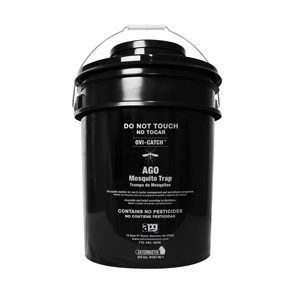
PHOTO: CATCHMASTER
AP&G Co.’s Catchmaster Ovi-Catch Mosquito Trap has received the Federal Lab Consortium Award for Excellence in Technology Transfer. Now in their 30th year, these awards recognize successful partnerships between a federal lab — in this case, the Centers for Disease Control and Prevention (CDC) — and an industry partner in making inventions into useful products, with demonstrated success.
In a news release, Catchmaster notes that these awards “are ranked as some of the most prestigious honors in the technology transfer field, and are given as a symbol of well-deserved recognition for phenomenal technological efforts.”
The Ovi-Catch Mosquito Trap uses mosquitoes’ breeding habits against them. The trap is designed to mimic mosquito breeding sites, particularly for some of the most invasive mosquito species known as container breeders. Mosquitoes are lured to the trap by the design and use of water, which mosquitoes need to complete their breeding cycle. Mosquitoes attempt to enter the trap to lay eggs, are prevented from reaching the water by a screen, and become stuck on a glue board inside the trap. Eliminating just one female mosquito can prevent up to 1,000 future mosquitoes, research has found.
“The trap is particularly effective against the Asian tiger mosquito, the yellow fever mosquito and the Culex house mosquitoes,” Dr. Stan Cope, AP&G’s VP of Technical Products & Services, said in the release.
The trap was initially developed by the CDC at its Puerto Rico research and testing facility. Researchers at the facility were using AP&G adhesives in various projects, but as work on the trap accelerated during the Zika virus scare, so did AP&G’s role consulting with CDC on the project. After securing a product license for the trap and working with the CDC’s parent organization, the National Institutes of Health (NIH), AP&G lent its large-scale manufacturing muscle to the process. AP&G introduced the product to the professional pest management industry in 2018, and the company works with distributors to market it to pest professionals and other customers.
The post Catchmaster mosquito trap garners award appeared first on Pest Management Professional.
from Pest Management Professional https://www.mypmp.net/2021/02/26/catchmaster-mosquito-trap-garners-award/
Sacramento CA
NCPMA selects 2020 award winners
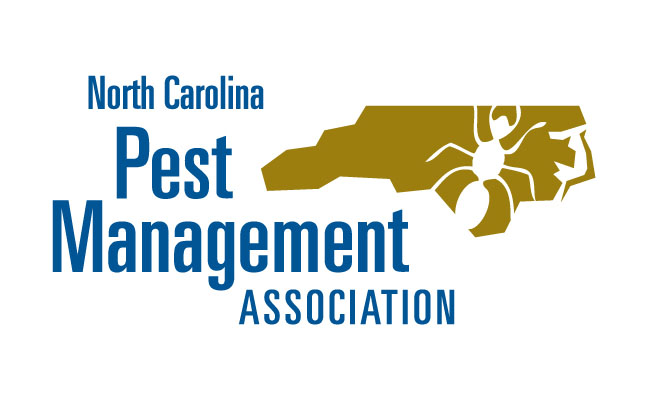
LOGO: NCPMA
The North Carolina Pest Management Association (NCPMA) named the winners of its 2020 Technician of the Year awards and 2020 Administrative Professional of the Year award. The winners were announced during the 2021 NCPMA Pest Control Technician’s School which was held virtually Jan. 25, 2021. The award winners are:
- Technician of the Year, pest management phase: Vance Brown, Peeler Environmental, Salisbury, N.C.
- Technician of the Year, wood-destroying insects phase: Eric Owen, Pisgah Pest Control, Brevard, N.C.
- Administrative Professional of the Year: Jennifer Helton, Gibson Pest Control, Asheville, N.C.
NCPMA presents two Technician of the Year awards each year to technicians who exemplify the best qualities of pest management professionals within their companies. The two Technician of the Year awards are given each year to technicians in the pest management phase and wood-destroying insects phase.
Technicians of the Year are chosen based on the applicant’s demonstration of leadership among peers, excellent customer relations, knowledge of his or her job, superior job performance and the ability to successfully handle problems on the job. All applicants must be members of NCPMA, have at least two years of experience in either the pest management or wood-destroying insects phase and must be nominated by a person in a leadership role in his or her company.
Winners of the Technician of the Year award receive a $250 gift card, a plaque and one free Pest Control Technician’s School registration.
The North Carolina Chapter of the Professional Women in Pest Management (NCPWIPM), a committee of the NCPMA, began awarding the Administrative Professional of the Year Award annually in 2018 to the administrative professional who best demonstrates customer service both internally and externally and a commitment to the company’s purpose.
Each nominee must be a current, full-time administrative support staff member and must have worked in his or her current position for at least two years.
Winners receive a plaque, a $250 gift card and a one-night stay at the 2020 Pest Control Technician’s School, as well as a gift card to cover expenses for the trip.
See last year’s award winners here.
The post NCPMA selects 2020 award winners appeared first on Pest Management Professional.
from Pest Management Professional https://www.mypmp.net/2021/02/26/ncpma-selects-2020-award-winners/
Sacramento CA
Arrow launches commercial disinfectant service
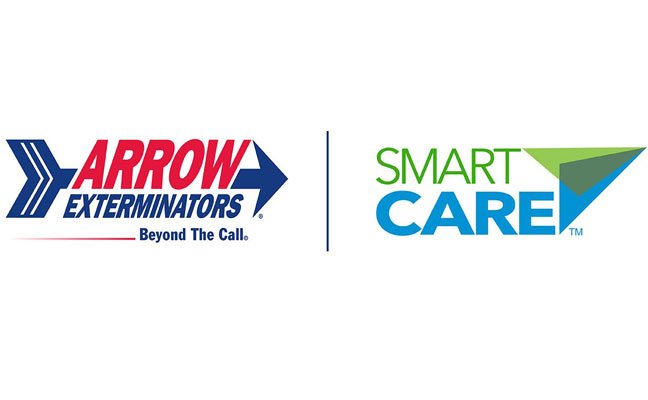
IMAGE: ARROW EXTERMINATORS
Arrow Exterminators’ SmartCare is a disinfecting service offered to industries of all kinds, including foodservice, retail, healthcare, hospitality, schools and more. The Atlanta, Ga.-based pest management firm introduced the service in late February.
“In the midst of the pandemic, we recognized a service need for businesses and industries alike that we have never offered in the past,” Frank Roy, Arrow’s SVP of Commercial Services, said in a news release. “This service will disinfect, sterilize, deodorize and purify any surface that may have been infected by bacteria and viruses such as COVID-19.”
Arrow CEO Emily Thomas Kendrick noted in the release that the company’s No. 1 priority “has always been to protect the health and property of our customers in the most environmentally responsible manner. With Arrow Exterminators’ SmartCare service, we have added another opportunity to accomplish that goal.”
ABOUT ARROW EXTERMINATORS
Family-owned and -operated since 1964, Atlanta, Ga.-based Arrow Exterminators is the sixth largest pest and termite control company in the United States, ranked by revenue. Arrow boasts a modern fleet of more than 2,100 vehicles, 137 service centers, 2,600 team members with revenues exceeding $285 million and in 2020 was named the No. 1 Top Workplace in Atlanta by the Atlanta Journal-Constitution. With QualityPro Certification by the National Pest Management Association, the company offers innovative and environmentally responsible services to protect homes and businesses of customers in Alabama, Arizona, Florida, Georgia, Kentucky, Louisiana, Mississippi, North Carolina, South Carolina, Tennessee, Texas and Virginia.
Arrow Chairman Joe Thomas is a member of Pest Management Professional’s Hall of Fame (Class of 2009). He is the son of Arrow’s late founders, Starkey and Jean Thomas.
The post Arrow launches commercial disinfectant service appeared first on Pest Management Professional.
from Pest Management Professional https://www.mypmp.net/2021/02/26/arrow-launches-commercial-disinfectant-service/
Sacramento CA
National Pest Management Month recognizes PMPs
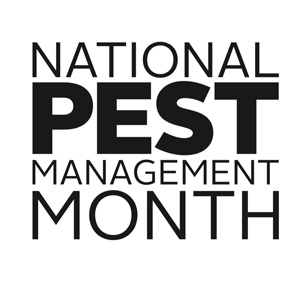
LOGO: NPMA
April is recognized as National Pest Management Month to help raise awareness of the essential role pest control plays in protecting public health. The month-long designation has been observed by the industry for more than four decades.
The Professional Pest Management Alliance (PPMA), which serves as the public outreach arm for the National Pest Management Association (NPMA), takes the month of April to encourage and educate homeowners and businesses about the essential role of professional pest control. The month-long observance is designed to honor the pest management industry’s vital role in protecting public health and property, as well the nation’s food supply, from pest-related diseases and threats.
“This special designation has been recognized for more than 40 years, and with professional pest control deemed an Essential Service amid the COVID-19 pandemic by the U.S. Department of Homeland Security for its vital role as a protector of public health, there’s no better time to remind homeowners just how vital these services are,” PPMA Executive Director Cindy Mannes noted in a news release. “The men and women in our industry deserve to be recognized for their tireless work throughout the pandemic to ensure homes and businesses alike receive the essential services they need to remain safe from the dangers associated with an infestation.”
With social distancing measures due to the COVID-19 pandemic still in effect, pest infestations are noticed with more time spent at home, underscoring the need for a reliable pest control partner.
The PPMA will focus on public outreach efforts this month to share the value of working with a licensed pest management professional (PMP) and pest control’s essential role.
PMPs and industry members are encouraged to use social media to share information during National Pest Management Month using the hashtag #NPMM in posts.
An exclusive toolkit full of marketing materials is available to PMPs who are mainframe subscribers on PPMAMainframe.org.
The post National Pest Management Month recognizes PMPs appeared first on Pest Management Professional.
from Pest Management Professional https://www.mypmp.net/2021/02/26/national-pest-management-month-recognizes-pmps/
Sacramento CA
Restaurant cockroaches aren’t always German

You may have immediately recognized this duo as Asian cockroaches, but your customer might assume they’re German cockroaches. PHOTO: COURTESY OF, AND COPYRIGHTED BY, GENE WHITE, PMIMAGES@EARTHLINK.NET
QUESTION:
Dan, what sort of “other” cockroaches might pest management professionals (PMPs) encounter in a restaurant setting?
—PERRY DOMESTIC
ANSWER:
Well, Perry, the easy answer would be “all of them.” Two that come to mind are German cockroach (Blattella germanica) lookalikes: the Asian cockroach (B. asahinai) and the field cockroach (B. vaga). Neither of these were ever involved in infesting a facility in my experience, but the sight of them often created significant issues with auditors and health inspectors.
While these non-industry folks are generally intelligent and well-trained, any smallish cockroach with racing stripes is “definitely a German” to them, no matter how many pictures you show them. Trying to convince an under-informed expert that the insect found in a monitor at the back door isn’t a German cockroach can be a losing battle.
In some ways, however, a health inspector isn’t wrong to raise a red flag. The U.S. Food & Drug Administration’s Food Code states “the premises shall be maintained free of insects, rodents, and other pests.” The species is entirely irrelevant: A pest is a pest; a cockroach is a cockroach.
WHERE THE BODIES AREN’T BURIED
A third species, American cockroaches (Periplaneta americana), can exploit introduction spots such as utility penetrations, and the gaps in the drain-waste-vent system. They’re frequently found in basements and in warm, moist areas. But where they are really a problem is when they find their way into the void-space of a drop ceiling. They can accumulate in large numbers. And while they are relatively easy to kill, their little corpses present a big problem.
It has been shown that organisms like Salmonella can live inside the cockroach’s waxy cuticle layer. After a void treatment to a drop ceiling, those dead cockroaches are just left up there to dry out and break apart. Potentially harmful organisms can find their way onto food prep surfaces below — and into food. In other words: After treatment, vacuum the remains so this doesn’t happen on your watch.
GO FORTH AND INSPECT
Now, if you follow some version of integrated pest management (IPM) principles, no matter the size of your company or the size of the client, you will have success:
- Know how to identify the pests you are likely to encounter, and other potentially problematic pests that may be found in your area. Those found in a rural community may not be the same as those found in a densely packed urban center.
- Exercise your intellectual curiosity and look for all the places the pest may gain entry.
- Find, document and communicate any conducive conditions that must be addressed.
- Continue to follow up on a schedule that makes sense for the pest in question.
Editor’s Note: Read more about the author’s stance on why educating customers is so important to successful treatment, “Be proactive with education.“
Email your questions about insect identification and pest management technologies to pmpeditor@northcoastmedia.net. Your questions most likely will be printed and answered in one of Pest Management Professional’s upcoming columns.
BALDWIN is director of technical, training and regulatory services for Terminix Commercial. He may be reached at dbaldwin@terminix.com.
The post Restaurant cockroaches aren’t always German appeared first on Pest Management Professional.
from Pest Management Professional https://www.mypmp.net/2021/02/26/restaurant-cockroaches-arent-always-german/
Sacramento CA
Be proactive with education
(Editor’s Note: Learn more about how this concept is particularly true when dealing with cockroaches in a commercial setting in Dan’s February “Ask the Expert” column for Pest Management Professional.)
No matter what pest you find yourself dealing with, much of the approach to prevention or elimination will be similar, at least in principle: Look for the source, address structural and sanitation issues, perform exclusion work where possible, and treat when necessary. But when dealing with the food industry, or any audited/regulated industry, there’s another important step: Get to know the regulators.
Developing a working relationship before you have a problem is an important piece of crisis management. Once something has gone wrong, it can be a real challenge to establish credibility in the eyes of a public health official: Everything sounds like excuse-making. If instead you make it a point to interact with officials ahead of time, either individually, or by inviting them to a local industry meeting, a level of mutual trust and understanding can be established.
I saw this firsthand early on in my pest management career when working in California’s San Francisco Bay market. My longtime friend and mentor, Ken Ward of Crane Pest Control, had me do a presentation on cockroach and rodent control practices for a local public health department. Years later, I have never forgotten how well the talk was received. Nor have I forgotten how, when several months later there was a client-created problem that needed to be addressed, working with that same health department was very much pain-free.
BALDWIN is director of technical, training and regulatory services for Terminix Commercial. He may be reached at dbaldwin@terminix.com.
The post Be proactive with education appeared first on Pest Management Professional.
from Pest Management Professional https://www.mypmp.net/2021/02/26/be-proactive-with-education/
Sacramento CA
Thursday, February 25, 2021
Bird-B-Gone: Avian Block

IMAGE: BIRD-B-GONE
Bird-B-Gone’s Avian Block passively distributes a proprietary blend of the bird deterrent methyl anthranilate (grape-seed extract) to effectively repel all birds, the company says. Avian Block’s ease of use can help you generate recurring revenue, while addressing historically hard-to-treat bird control issues like outdoor restaurants, trees and entryways, or any other scenario where traditional structural bird control products cannot be used.
The post Bird-B-Gone: Avian Block appeared first on Pest Management Professional.
from Pest Management Professional https://www.mypmp.net/2021/02/26/bird-b-gone-avian-block/
Sacramento CA
Ask Annissa: Land Fire Damage Jobs Without Chasing!
Fire chasing in the restoration industry is a very hot topic, pun not totally intended. Chasing fires presents ethical issues, among other things. In this week’s video, Annissa has tips for how to get literally buried in fire damage restoration work without going on a single chase.
from Subscribe to R&R Magazine's RSS Feed https://www.randrmagonline.com/articles/89318-ask-annissa-land-fire-damage-jobs-without-chasing
Mold Remediation Baltimore
Truly Nolen adds Mr. Pack Rat as independent division

PHOTO: TRULY NOLEN PEST CONTROL
Truly Nolen Pest Control, headquartered in Tucson, Ariz., has purchased Mr. Pack Rat, a company that exclusively resolves pack rat issues. Also located in Tucson, Mr. Pack Rat will operate as an independent division of Truly Nolen.
“We are excited to welcome Mr. Pack Rat to our Truly Nolen family,” said Scarlett Nolen, president of Truly Nolen. “Their company specializes in pack rats and is known in Tucson for their excellent work, so we felt providing them with our resources while adding them as an independent division made the most sense for everyone involved.”
Kris Brown, owner of Mr. Pack Rat, explained why he decided to sell his company. “I felt it was the best way to help ensure stability for my customers and employees going forward, especially during these turbulent times,” said Brown. “I spent 25 years with Truly Nolen and was trained by Mr. Nolen himself. I felt becoming an independent division of theirs was the best way to maintain stability while providing resources to help us weather any adversity the future may hold.”
Zenobi Pest Control of Naples, Fla., Shields Pest Control of Tucson, Ariz., and Hawkeye Pest Control of Odessa, Fla., served as Truly Nolen’s first three acquisitions of 2021. According to Greg Weatherly, Truly Nolen’s acquisitions director, new markets and expansion through acquisitions is on the horizon for Truly Nolen this year.
“Mr. Pack Rat is our fourth acquisition this year and we thank Kris Brown for allowing us the opportunity to create an independent division that will allow his team to continue to thrive on behalf of his customers,” Weatherly said. “With our expanded presence in Naples, metro Tampa Bay, and Tucson from prior acquisitions as well as creating this independent division in Tucson, we look forward to speaking to anyone interested in becoming part of our growing footprint across America.”
Founded in 1938, Tucson, Arizona-based Truly Nolen of America has more than 80 branch offices in Arizona, California, Florida, Nevada, New Mexico, Texas and Utah. The company also has independently owned and operated franchises in a number of territories including Kentucky, Georgia, New Jersey, North Carolina, Canada, Puerto Rico and more than 60 countries.
The post Truly Nolen adds Mr. Pack Rat as independent division appeared first on Pest Management Professional.
from Pest Management Professional https://www.mypmp.net/2021/02/25/truly-nolen-adds-mr-pack-rat-as-independent-division/
Sacramento CA
Pest Management Foundation bestows scholarships to 5 entomology students
The Pest Management Foundation, which is affiliated with the National Pest Management Association (NPMA), presented scholarships to five students pursuing advanced degrees in entomology.
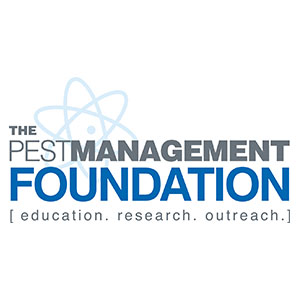
LOGO: PEST MANAGEMENT FOUNDATION
The Pest Management Foundation scholarship program launched in 2018 and provides up to five $2,000 scholarships annually for outstanding students interested in urban entomology. It identifies and rewards the best and brightest minds in undergraduate and graduate programs across the nation, supporting the next generation of urban entomologists who will become part of the pest management industry in the future.
This year’s scholarship recipients are:
-
- Alexander Blumenfeld, who is pursuing a Ph.D. at Texas A&M University, College Station, Texas
- Johnalyn Gordon, who is pursuing a Ph.D. at the University of Kentucky, Lexington, Ky.
- Allison Johnson, who is pursuing a Ph.D. at the University of Georgia, Athens, Ga.
- Jamora Hamilton, who is pursuing a Ph.D. at the University of North Carolina, Chapel, N.C.
- Seun Oladipupo, who is pursuing a Ph.D. at Auburn University, Auburn, Ala.
The Pest Management Foundation is a 501 (c)(3) charitable organization, affiliated with the NPMA, the industry’s only national trade group. The Pest Management Foundation has been in existence for more than 40 years, and has funded urban entomology research projects at universities nationwide.
Its vision is to make life better by protecting food, health, property and brands for the well-being of all people and communities by advancing the pest management industry through education, research, and outreach.
Its mission is to grow Pest Management Foundation resources through fundraising and thoughtful investing in order to support education, research, and outreach in urban entomology and structural pest management across North America and foster collaboration between industry and the research community.
The post Pest Management Foundation bestows scholarships to 5 entomology students appeared first on Pest Management Professional.
from Pest Management Professional https://www.mypmp.net/2021/02/25/pest-management-foundation-bestows-scholarships-to-5-entomology-students/
Sacramento CA
PMPs find new ways to help their communities
Charitable donations, volunteer efforts and project fundraisers have long been part and parcel of the professional pest management industry. Not only is it simply the right thing to do, to help those in need, but it also gives pest control companies more name recognition in their communities, and builds their reputations as businesses to patronize (and better yet, work for). What follow are just a few of the many programs we’ve learned about in recent months going on around the country. We hope they inspire you to do something similar in your neck of the woods. And if you have participated in a charitable program recently, or will do so soon, we want to know about it: Please drop us a line at pmpeditor@northcoastmedia.net.

Managing Partner Andrew Longfellow presenting a $10,000 check to Feeding Tampa Bay. IMAGE: NATURZONE
Sarasota, Fla.-based NaturZone Pest Control is now an annual giving partner to Feeding Tampa Bay, for which 98 cents of every dollar donated goes to helping those in need. At left, NaturZone Managing Partner Andrew Longfellow presents a $10,000 check to Feeding Tampa Bay Development Officer Jason Prado. Read more: NaturZone starts 2021 with promotions, giving back

PHOTO: MASSEY SERVICES
Orlando, Fla.-based Massey Services’ Richardson, Texas, service center team bought holiday gifts for The Samaritan Inn, which supports individuals and families experiencing homelessness.

Carolyn and Kevin Kirkland. PHOTO: NISUS CORP.
Kevin Kirkland, president and CEO of Rockford, Tenn.-based Nisus Corp., and his wife, Carolyn, were recently named co-presidents of the East Tennessee JDRF board. Based in New York, N.Y., JDRF is considered to be the leading global organization funding research for type 1 diabetes (T1D, formerly known as juvenile diabetes). The Kirklands are actively involved with JDRF because their son Ethan lives with the disease. Read more: Nisus CEO, wife to lead foundation for type 1 diabetes research

From left, Amy Kneller, Ariana Mattice-Lybrand, Bill Clark, Sarah Thomas-Clark and Kristen Cargill get ready to cut a ribbon and celebrate Thomas Pest Services’ 10 years of success in business. PHOTO: THOMAS PEST SERVICES
From left, Amy Kneller, Ariana Mattice-Lybrand, Bill Clark, Sarah Thomas-Clark and Kristen Cargill cut a ribbon and celebrate Thomas Pest Services’ 10 years of success in business. The Schenectady, N.Y.-based firm marked its milestone by donating $10 of each new service to Toys for Tots from Dec. 1-31. The firm also encouraged customers to donate new, unwrapped toys, which could be dropped off directly at the Thomas offices, or given to any technician at time of service. Read more: Thomas Pest Services marks milestone with charity project

Andrea Hancock, VP of Mattress Safe, and Nicole Smith, project manager for Stockings with Care. PHOTO: DAVID HANCOCK
Over the holidays, P.E.S.T. Relief International partnered with Mattress Safe and a local roofing business for Stockings with Care, a program that provided Christmas stockings and presents for the women and children of Family Haven, a Cumming, Ga.-based non-profit domestic violence advocate resource. Mattress Safe also donated encasements to protect the 34 new mattresses at Family Haven’s shelter facility, which recently recovered from a bed bug infestation. Pictured from left are P.E.S.T. Relief International Founder Andrea Hancock, who is also VP of Mattress Safe, and Mattress Safe’s Nicole Smith, manager of the Stockings with Care program. Read more: P.E.S.T. Relief International, Mattress Safe partner to support Georgia nonprofit
The post PMPs find new ways to help their communities appeared first on Pest Management Professional.
from Pest Management Professional https://www.mypmp.net/2021/02/25/pmps-find-new-ways-to-help-their-communities/
Sacramento CA
Wednesday, February 24, 2021
Woodstream: Victor VLINK Power-Kill Pro

IMAGE: WOODSTREAM
Woodstream has announced its latest devices integrated with the Victor VLINK Pest Network: the Victor VLINK Power-Kill Pro mouse and rat traps. These next-generation Power-Kill traps feature an improved design to increase catch rate and prevent escapes. With thumb grips for safer setting, multiple baiting options and a waterproof design, the re-engineered Power-Kill delivers effective control plus long-range, 24/7 remote monitoring. When triggered, the trap can detect whether a rodent is captured, ensuring trap service is performed as quickly as possible.
The post Woodstream: Victor VLINK Power-Kill Pro appeared first on Pest Management Professional.
from Pest Management Professional https://www.mypmp.net/2021/02/25/woodstream-vlink-power-kill-pro/
Sacramento CA
